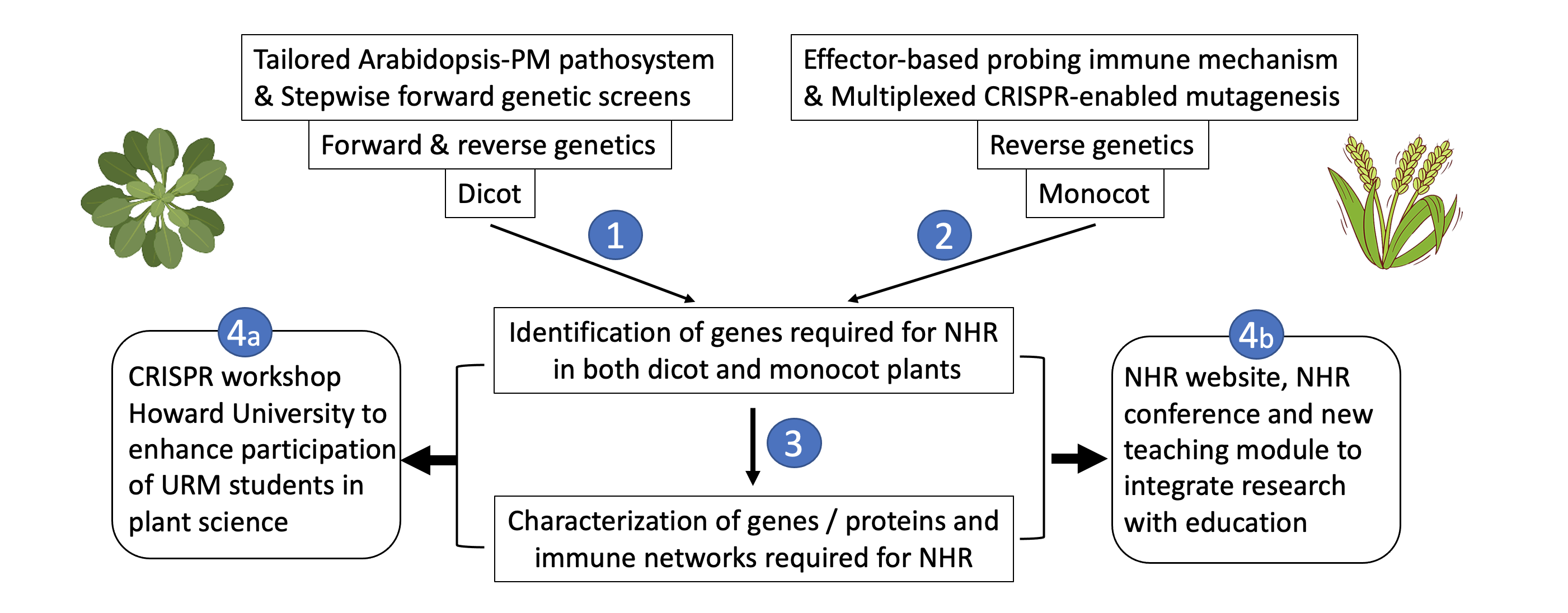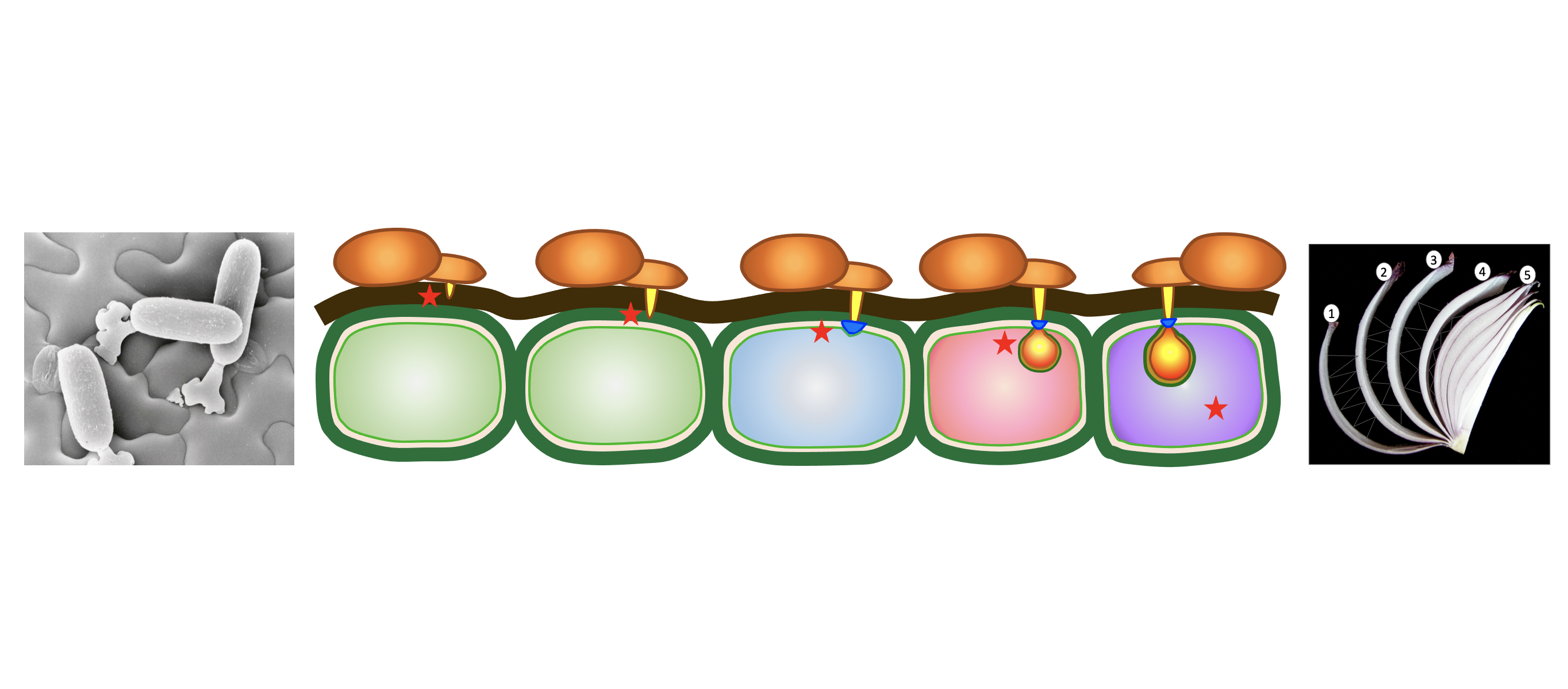Project Description
Project Summary:
Specific Objectives:
The long-term goal of this project is to elucidate non-host resistance (NHR) mechanisms for improving crop resistance against aggressive pathogens. NHR is a phenomenological term widely used by plant pathologists to describe effectiveimmunity (or complete resistance) of all plants within a species to all strains of a particular pathogen species. A prime example of NHR is rice immunity to rust and powdery mildew pathogens that cause serious diseases in many other cereal crops including wheat and barley. NHR provides a major safety barrier for all plants; however, the molecular basis of NHR in most cases remains elusive. Conceivably, any plant defenses induced by microbial attacks, including those attributable to NHR, are mechanistically connected to the well-established PAMP (pathogen-associated molecular pattern)-triggered immunity (PTI) and/or effector-triggered immunity (ETI).

The key question is how NHR might be manifested by PTI and ETI. This research project aims to leverage the complementary expertise from four labs to address the knowledge gap with five specific objectives. (1) Expand the identification of novel genes contributing to NHR in a dicot model plant. Stepwise forward genetic screens will be used to isolate Arabidopsis mutants and subsequently identify genes required for NHR against non-adapted powdery mildew and rust fungi. (2) Identify genes essential for NHR in a monocot model plant. Multiplexed CRISPR will be employed to knock out up to 50 various rice immunity genes singly or in combination to identify genes required for rice NHR against rust and mildew. (3) Characterize novel immune mechanisms contributing to NHR. Novel immunity components contributing to NHR will be mechanistically characterized under the framework of PTI and ETI or beyond. (4) Facilitate community research and promote education of next-generation plant scientists. Four specific programs will be implemented to integrate research with education and outreach activities.
Intellectual Merit:
“What is the molecular basis of NHR?” is considered to be one of the top 10 unanswered questions in the area of molecular plant-microbe interactions. The proposed research will unravel different types of NHR in dicot and monocot plant species, enabling genetic dissection and molecular elucidation of NHR mechanisms through genome-wide-and-stepwise forward and reverse genetic approaches, and other omics technologies. The innovative strategies, experimental results, research materials, and enabling tools from this project will reinvigorate and accelerate NHR-focused research by the community. New knowledge from the proposed research will significantly advance our understanding of NHR, which may help establish mechanistic frameworks for different types of NHR in connection with PTI and/or ETI, and open new avenues for future engineering host resistance against devastating pathogens in crop plants.
Broader Impacts:
Globally, up to 15% of crop losses are caused by pathogens (mainly fungi) that, by definition, have conquered NHR of crop plants. One transformative strategy for reducing crop losses due to diseases is to reboot NHR by reconfiguring endogenous genes or expressing genes contributing to NHR of other plants (e.g., rice’s NHR against rust and mildew) in staple crops such as wheat and barley. Identification and functional characterization of plant immunity components required for NHR will help achieve this long-term goal, thereby contributing to global food security. This project will implement four specific programs to better integrate research with education and outreach activities. A major focus of these programs is to enhance participation of under-represented minority undergraduate students in plant science through three consecutive “CRISPR Technology and Application” summer workshops at Howard University, which is a private, federally chartered historically black research university in Washington, D.C.
Approaches:
We will use a combination of step-wise forward (random EMS-mutagenesis) and reversed (CRISPR-targeted mutagenesis) genetics approaches to dissect the multiple layers of NHR in plants. The gradual adaptation process of any filamentous fungus on plants and the multi-layered NHR in the attacked plants are illustrated by the cartoon shown below.

Project FLowchart:

